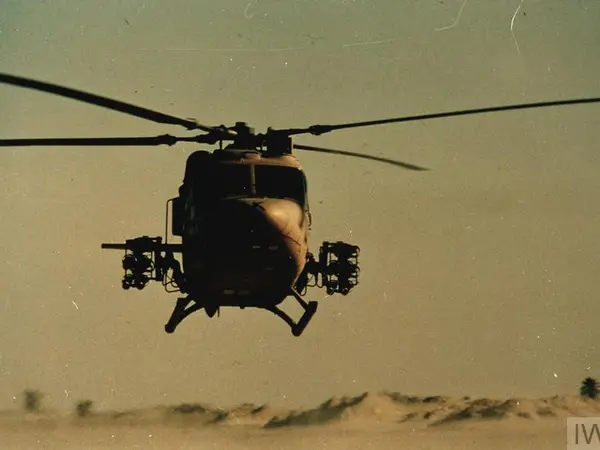The Gulf War, fought from 1990 to 1991, saw the largest use of British troops in a single deployment since the Second World War.
Known by many names, Persian Gulf War, First Gulf War, First Iraq War and Kuwait War, the war was sparked by the actions of Saddam Hussein, President of Iraq.
Gulf War Illness
The invasion
There were many deep rooted and historical tensions in the region and disagreements that led to the invasion. Iraq never recognised Kuwait's independence following its detachment as an Ottoman province of Iraq by the British after the First World War, and accused Kuwait - a small oil producing country - of over producing oil and driving down prices, which Iraq said caused the loss of billions in revenue.
Wide condemnation
A coalition show of force
Sanctions and deadlines
British airmen taken hostage
A coalition air war - known as Operation Desert Storm - began on 17 January 1991 against military, economic and communications targets in Iraq and Kuwait to force Iraqi troops to withdraw. During the attack coalition aircrews flew over 100,000 missions.
During the initial airstrikes British Tornado Pilot John Peters and his navigator John Nichol were shot down. The airmen were taken hostage, interrogated and tortured by the Iraqi secret police and then paraded on Iraqi TV, beaten and bruised.
After a month of unrelenting series of airstrikes, land operations - known as Operation Granby by UK troops - started on 24 February. Just a few days after the ground assault launched Kuwait City was liberated on 26 February.
A final act of destruction
During the conflict 392 coalition service personnel died, including 47 British servicemen.
The end of the war
With the Iraqi forces retreating President Bush declared a cease-fire, and on 28 February 1991 he announced that Kuwait had been liberated. A few days later on 3 March 1991 Iraq agreed to accept all of the UN resolutions, and a cease-fire agreement was finally signed on 6 April 1991.
.jpg?sfvrsn=c0200ece_0&method=CropCropArguments&width=680&height=384&Signature=5948D8ABF8622DE3158D1C0BBBD290D52578A201)

.jpg?sfvrsn=f776c605_2&method=CropCropArguments&width=1600&height=847&Signature=979AFA6964A9D0E21792AA0F7E7DD95A664B43BE)

.jpg?sfvrsn=1d4a5c8f_0&method=CropCropArguments&width=600&height=450&Signature=7C404FC81E188B937154320B936EDC658C43B479)
_28a71c52-5a62-4997-bdbc-f165d5fe8f4d.jpg?sfvrsn=dfd13fda_2&method=CropCropArguments&width=600&height=450&Signature=6A90EBB80600B854F9E187E36F0033EE034CEFD3)
.jpg?sfvrsn=f776c605_2&method=CropCropArguments&width=600&height=450&Signature=3DD9BA867B1B4EC5E5FE3E0DCD43931FD3E5425B)
.jpg?sfvrsn=ebed397b_2&method=CropCropArguments&width=600&height=450&Signature=774ED4075C2C20033DF4F5F27C9AF5285078C0A6)

.jpg?sfvrsn=ebed397b_2&method=CropCropArguments&width=452&height=452&Signature=30985165AB362A39D0622C6F3973F11507549077)

